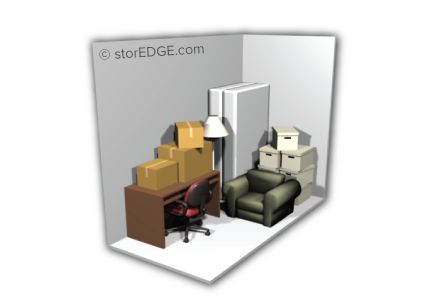How much does a storage unit cost?
—
August 25th, 2025

When you start searching for a storage unit, one of the first questions that comes to mind is: “How much does a storage unit cost?” The answer depends on several factors, including the location, size, and features of the unit and facility. On average, storage units typically range from $35 to $150 per month, but prices can increase with additional features such as climate control, enhanced security, or 24/7 access. These upgrades can provide extra peace of mind and ensure your belongings have an added layer of protection for your items.
Before You Begin
Before you start looking, take a moment to consider what you need. Think about the purpose and duration of your storage rental, whether it’s for a temporary move or a long-term solution. You should also make a quick inventory of the items you plan to store. This will help you get a better idea of what size unit you'll need. In general, there are two main types of storage units to choose from: drive-up accessible units, which allow for easy loading and unloading, or climate-controlled units, which help protect temperature-sensitive items.
Climate-controlled storage units are often located inside a building, which means you'll want to consider the loading and unloading process. This can be a significant factor when moving your belongings in and out.
Storage Unit Size and Cost Guide
5x5 ( A small closet)
Boxes, small furniture, and seasonal items. Cost: $35–$60
5x10 (A walk-in closet )
A few pieces of furniture and boxes. Cost: $58–$80
10x10 ( A one-bedroom apartment )
Furniture and boxes from a one-bedroom apartment. Cost: $105–$135
10x15 (A small one-car garage )
Larger items or the contents of multiple rooms. Cost: $130–$200
10x20 (A one-car garage)
A vehicle or a large amount of furniture. Cost: $160–$250
10x30 ( A one-and-a-half car garage
An entire household's belongings or a vehicle. Cost: $200–$400+
Climate-controlled units are also an option. They typically cost 20–50% more than standard units (or anywhere from $80 to $400 a month) but keep a consistent temperature to prevent damage to sensitive items. Because many climate-controlled units are located indoors, accessibility and convenience are factors to keep in mind. You should consider a climate-controlled unit for items that are sensitive to extreme temperature changes or humidity, such as wood furniture, electronics, musical instruments, artwork, photos, and important documents.
Tips for Saving Money
The easiest way to find the best price is to compare local storage facilities. Prices can vary significantly by location, so it’s a good idea to check rates online before you start making calls. Just remember that the cheapest option isn’t always the best. Look for first-month free or other special promotions that many facilities offer. Another way to save is by renting for a longer period. Many facilities offer discounts if you commit to a unit for several months or more, and it can also be a good idea to ask if they offer any additional monthly discounts, such as a senior, military, or student discount. It may also be possible to negotiate a better rate, especially if you pay for a few months in advance. The simplest way to reduce your storage cost is by decluttering before you rent. The less you have to store, the smaller the unit you’ll need, which means you’ll pay less each month. Take time to decide what you truly need to keep and consider selling or donating items you no longer use.
Other Costs to Consider
In addition to rent, there are a few other costs to keep in mind. Some facilities charge an initial administrative fee or deposit when you first rent a unit. These can range from $15 to $20. Insurance is another common expense, as most facilities require you to insure your belongings since they don’t cover damage themselves. If you already have renters' or homeowners’ insurance, check with your provider to see if storage is included. Finally, don’t forget about locks. Investing in a strong quality lock, such as a disc lock, is often recommended to keep your unit secure.
By carefully considering your storage needs, planning ahead, and factoring in these extra costs, you’ll be better prepared to find a storage unit that fits both your budget and your peace of mind.
Stash It, Stack It, Store It: The Self Storage Chronicles
